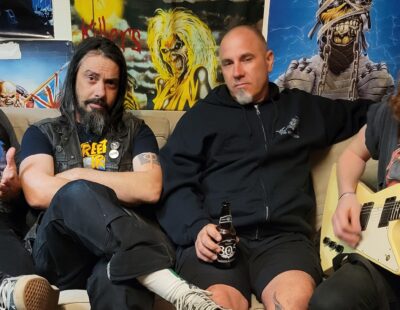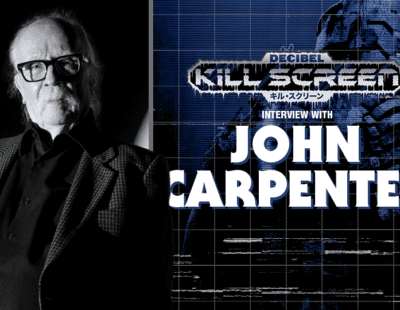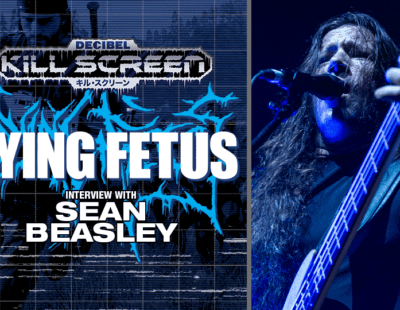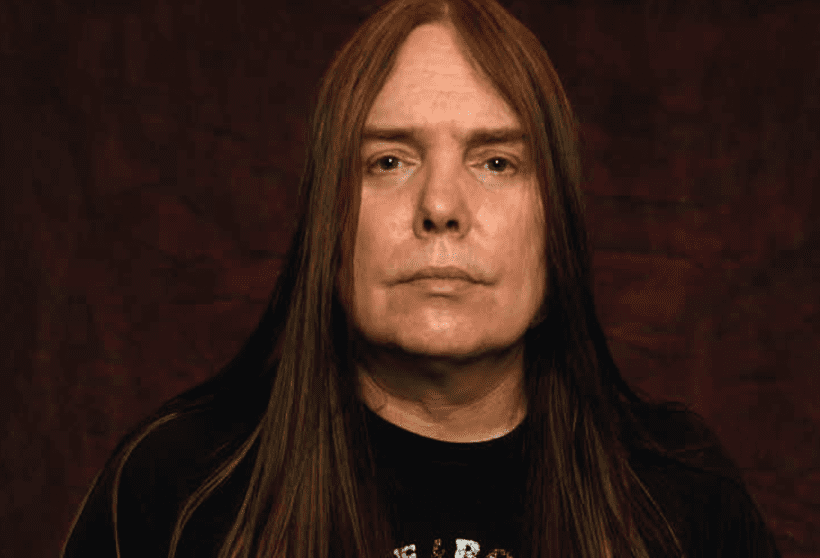
Unless you’re in his circle or are very good at reading small print — photo credits, for example — the name Frank White might not be familiar. But it should be. Over the years and across many publications (print and digital), White’s photographs of our heroes in action (normally, performing live on stage) have served to remind us that life in the photo pit is necessary in documenting our history, culture, and the people who are at the center of creating it. White has photographed Led Zeppelin, Blue Öyster Cult, Black Sabbath, Mahogony Rush, AC/DC, Greg Lake, Rush, Chuck Schuldiner (for our Death Oral History issue — see photo below), Thin Lizzy, and, of course, Ronnie James Dio, who is the subject of White’s new photo-memoir book titled, Ronnie James Dio: A Life In Vision 1975 – 2009, through UK-based Wymer Publishing.
White’s first encounter with Dio was during the former Elf vocalist’s stint with Rainbow. From that point forward, White was convinced he was capturing a legend in the making. Over the years, White shot Dio in Black Sabbath, as a solo artist, when he was back in Black Sabbath, then again as frontman for Heaven & Hell, and throughout the rest of his solo career. The duo formed a bond that is evident as Ronnie James Dio: A Life In Vision 1975 – 2009 progresses into the late ’80s and early ’90s. Dio was clearly aware of White’s presence, and with that allowed White to photograph some of Dio’s most endearing moments, whether it was Dio smiling, throwing the horns, or mid-lyric.
Read on as White shares an abridged version — Decibel in full query mode — of his own story from accounts within the photo tome that is Ronnie James Dio: A Life In Vision 1975 – 2009.
Introduce yourself, Frank. I’m sure we’ve all seen your work but didn’t know who was behind the photo.
Frank White: I was born in 1962 and raised with my two sisters in Bergen County, New Jersey, with a few years in Bronx, New York as a baby to child in the mid 1960s to be close to my grandparents. Then moved to New Jersey in the late 1960s. My mother was a photographer earlier on and my father was in the insurance business; I got into selling items like flower seeds, candy, listening to music, and photography by the late 1960s and photographed my first concert — Led Zeppelin — at 12 years-old on February 12, 1975. I photographed Ronnie [James Dio] for the first time in Rainbow in November 1975 when I was 13 at the Beacon Theater in NYC. I was already photographing a variety of music bands at that time. I would start to photograph Ronnie more in the early 1980s and for many years after that while photographing other genres of music. A few months after graduating high school in 1981, my first photo of Greg Lake of ELP [Emerson, Lake & Palmer] was published in a local Bergen County newspaper in December 1981. My first published music magazine photo was of Jorma Kaukonen of Hot Tuna, who was also in Jefferson Airplane and I sold the photo to Relix Magazine in November 1982 for the December issue. A couple years later, I met Ronnie for the first time after his Dio show at the Meadowlands in New Jersey 1984, not far from where I lived. Months later, and after 10 years photographing many genres of music, published in many music magazines, I was going on tour with bands as their road photographer. I became a photo agent in 1986 and started the Frank White Photo Agency out of my home selling photos for other photographers and currently is going very well. I started to travel to other countries. England was the first one in December 1987 then years later back to England, then to Europe, Brazil, and Canada. Continued to photograph shows with Ronnie until 2009 and many genres of music to the present day. In 2018, I became a author, signing three book contracts. The current book is on Dio.
How did the idea of a Ronnie James Dio book come to light? I’m sure you’ve shot a lot of your heroes. Dio is a unique choice.
Frank White: Yes, he is, and over the years, I realized I have photographed Ronnie from 1975 thru 2009. I have live photos of him in Rainbow, and then live and offstage photos in Black Sabbath, Dio, and Heaven and Hell from here in the U.S., Canada, and Europe. I have been selling band photos to book companies since the mid 1980s and thought it would be a good idea to put a book out about all the years I photographed him. I found a new book company to contact in 2018 through one of the magazines I work with. I contacted them and started to show them photos for a book on Black Sabbath they were already working on. Then, one day as we were emailing each other, I just thought about what books maybe I would like to bring out and Dio came to mind as some of his photos were in my Black Sabbath file. It seemed like the right time to create a book about my time photographing the bands he was in and soon to be 10 years since he departed from us.
In the book you talk about borrowing your mother’s camera to shoot shows. Did you ever get caught? If not, I’m sure she pretty much figured out quickly once the jobs started rolling in that required your services.
Frank White: No, I never got caught using her camera equipment. I was very cunning as a child and into my teenage years. I never got in major trouble growing up, so my parents had a lot of trust in me. They did not think I was using the camera and was able to use public transportation to get anywhere as a kid. However, my mom did not like to drive by the late 1960s and took me on the bus from our hometown in New Jersey into NYC and used the subway to get to her parents’ apartment, so that is how I learned at a young age to get around without the use of a car. From earlier on in the mid 1970s, I would just hid any photos I shot in a few of my dresser drawers with albums, music and horror magazines, and comic books mixed in. I would put the slide pages in between the pages of the magazines, never thinking one day my photos would be in music magazines. A year or so later, I asked my father to buy me a camera, and he bought me one with some accessories for my birthday. Back then, I was not a published photographer yet. To make money off my photos, I would sell them to friends of mine in my hometown, in my middle and high schools, in a couple stores in Bergen County, on the streets near concert venues, and on the boardwalk in Seaside Heights New Jersey until 1982. After my first published music photo in December of that year it just snowballed from there.
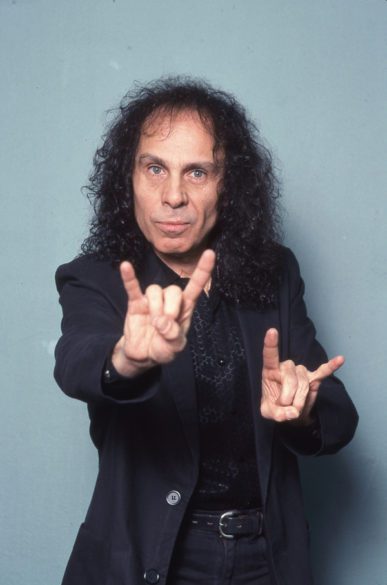
Frank White: It was in 1976 and the model was a 1976 Yashica FX-2 35mm camera with a Vivatar flash, a telephoto lens, and a black leather camera bag. The following year, I picked up a sturdier camera case as the bag would get banged around at shows.
What were your preferred settings and lenses? I’m assuming there was a lot of low light shooting, so were probably shooting with 400 or 800?
Frank White: My mother taught me for about six years before I shot my first show, so I had knowledge of using a 35mm camera outside and inside with and without a flash and knew the difference in film speeds that my mom showed me how to stop the action and the difference between slow and fast speed film. I used 200 Kodachrome slide film when I shot Led Zeppelin and other bands that year and some the following year. I would be upfront many times in arenas and theaters, so the lights were very bright. Once in a while I brought her flash with me; one of those shows was photographing Rainbow in 1975.
What was your first paid shoot and what was that like to earn money off it?
Frank White: Well, the first year music magazines were paying me for photos I shot in the past and it was great to get paid, and to get a copy of the magazine for free and letting the fans, bands, and record companies out there know a new music photographer was now involved with their monthly read of their favorite bands. It was probably late 1983 for my first paid shoot from a magazine company I was with called Harris Publication in NYC, which had Guitar World, Rock Fever, Rock World but can’t remember which show it was. I was still photographing some shows and selling photo at the time to magazines without using a magazine assignment to get into them.
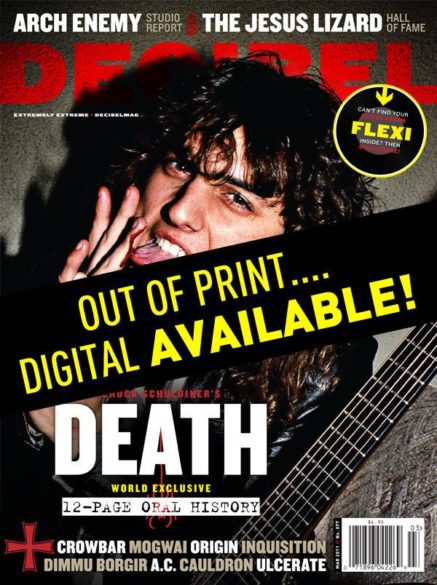
Frank White: It was very exciting to see my photos instantaneously appear in the back of my camera in the early 2000s, but it took a little while to just stick to a digital cameras, as I was still shooting slides and liked the hard copies. The digital camera has more capabilities, a photo card/chip instead of film that can hold thousands of images as opposed to 36 images per roll of film and a lot faster when there is not a lot of time to photograph a subject.
What’s your current go-to gear?
Frank White: I have Nikon D810 and D300 cameras, Nikon flashes, side battery packs, a Nikon 18-135 lens, a Nikon 80-200 lens, and camera back pack.
Hard question, but what’s your favorite image of Ronnie?
Frank White: It’s a toss up between the black and white photo on page 33 and the color full-page on page 103 of my book. Both show the famous Ronnie pose on stage.
You established a good relationship with Ronnie over the years. How did his passing affect you?
Frank White: It blew me away. He always put on 110 percent when he performed. His voice was amazing. He was such a friendly person whenever I was around him. He was so focused on keeping the band going on tour, not canceling tour dates, the amount of people he was helping to support, he ignored what was wrong inside him until it was too late.
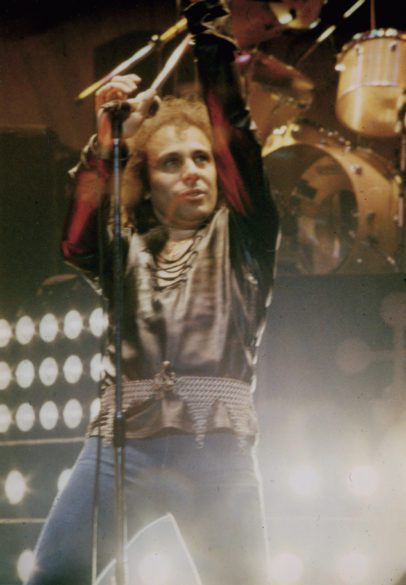
Frank White: Wow! What a great photography book on a photographer’s view and story of one of the best singers in the world of music.
The current edition of your book is in hardcover but there’s a soft cover coming soon. In short, tell us about both editions.
Frank White: It is about how a kid from New Jersey became a legendary music photographer and during the first 34 years of his career followed the musical career of one of his favorite music singers.
Where can fans order your book?
Frank White: Fans can go to https://www.wymeruk.co.uk (click HERE). On the main page, tap Collector’s Items and scroll down. The book should be in book stores, Amazon, and other outlets by the fall of this year.
** Frank White’s photo-memoir titled “Ronnie James Dio: A Life In Vision 1975 – 2009” on Ronnie James Dio is out now through Wymer Publishing. Fans can order a copy HERE.




